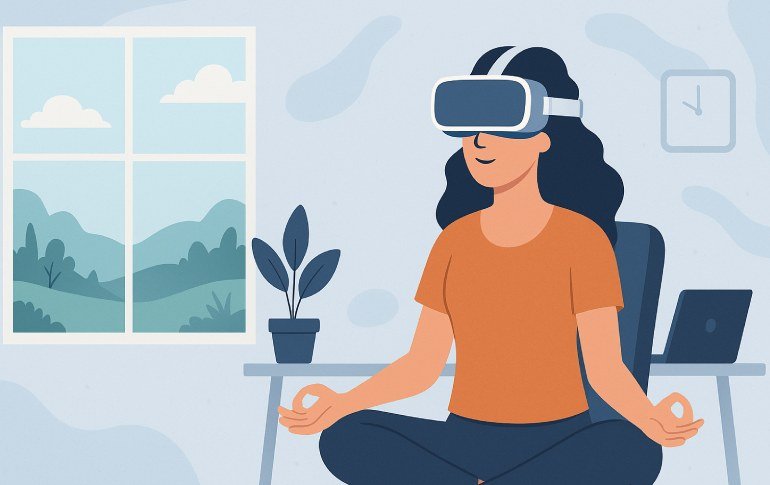In today’s corporate world, stress, anxiety, and burnout are affecting employees’ well-being, leading to decreased productivity and job satisfaction. Companies are now turning to VR-based relaxation solutions to address these issues. This innovative approach offers an immersive way for employees to unwind, reset, and improve their mental health, directly benefiting the overall work environment. By integrating VR for employee well-being, organizations are embracing the future of corporate wellness.
What Are VR-Based Relaxation Solutions?
VR-based relaxation solutions use virtual reality (VR) technology to create calming, immersive environments where employees can practice mindfulness and relaxation techniques. Through VR headsets, employees can experience environments like:
-
Tranquil beaches
-
Quiet forests
-
Peaceful mountaintops
These virtual experiences offer employees a quick escape from the stress of the office, allowing them to take short breaks and reset their minds.
Benefits of VR-Based Relaxation Solutions
1. Stress Reduction VR relaxation sessions are highly effective at reducing stress. Studies show that immersive meditation programs can lower cortisol levels, the body’s primary stress hormone.
2. Improved Focus and Productivity Taking regular VR breaks helps employees clear their minds, which leads to enhanced focus. After a short session, employees return to work feeling refreshed, increasing productivity and mental clarity.
3. Better Mental Health Support Mental health issues like anxiety and burnout are rising among employees. VR for employee well-being offers a direct approach to alleviating these concerns.
4. Enhanced Emotional Regulation VR-based relaxation solutions help employees regulate their emotions better. Mindfulness exercises within VR environments improve emotional intelligence, making employees more adaptable in high-pressure situations.
How to Implement VR-Based Relaxation Solutions
To introduce VR-based relaxation solutions in your workplace, follow these steps:
1. Invest in VR Equipment To get started, you’ll need VR headsets for employees to use. Companies can either purchase individual headsets or set up shared VR stations in the office.
2. Choose the Right VR Platform Select a VR platform with customizable meditation and relaxation experiences. Look for platforms that offer a variety of immersive environments and guided sessions tailored to corporate needs.
-
Features to look for: Guided Vr meditation, immersive environments, customizable sessions.
-
VR app recommendations: Platforms like Cognihab
3. Create a Relaxation Space Designate a quiet space where employees can take their VR breaks.
Space requirements: Quiet, private areas for relaxation.
4. Encourage Regular Use Incorporate VR relaxation breaks into the daily routine. Encourage employees to take short sessions throughout the day, such as during lunch breaks or between meetings.
5. Monitor Effectiveness Track employee feedback and participation rates to evaluate the effectiveness of the VR wellness program. Adjust based on employee needs and preferences.
Conclusion
VR-based relaxation therapy is revolutionizing how companies approach employee well-being. By incorporating VR for employee well-being into corporate wellness programs, businesses can offer employees an innovative, effective, and engaging way to reduce stress, improve mental health, and enhance productivity.

